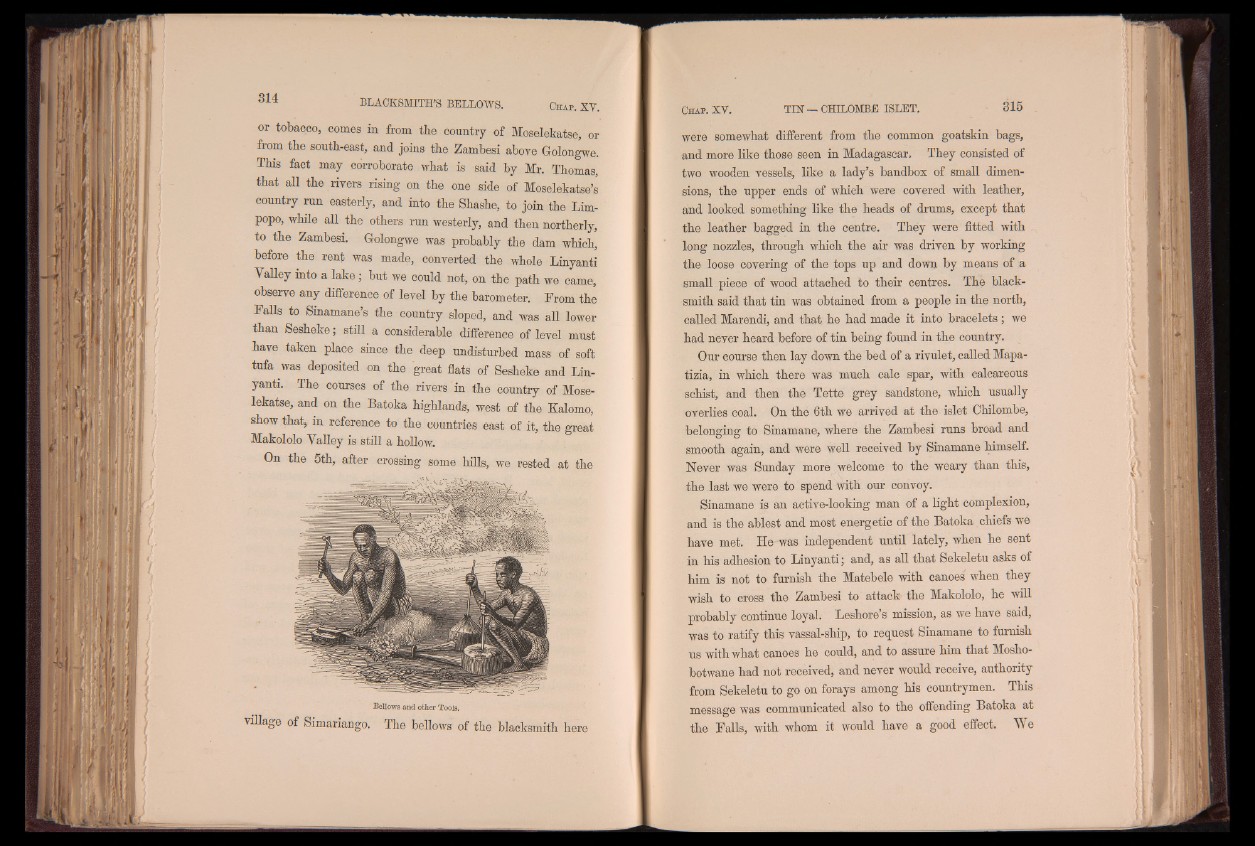
or tobacco, comes in from the country of Moselebatse, or
from the south-east, and joins the Zambesi above Golongwe.
This fact may corroborate what is said by Mr. Thomas,
that all the rivers rising on the one side of Moselekatse’I
country run easterly, and into the Shashe, to join the Limpopo,
while all the others run westerly, and then northerly,
to the Zambesi. Golongwe was probably the dam which,
before the rent was made, converted the whole Linyanti
Valley into a lak e; but we could not, on the path we came,
observe any difference of level by the barometer. From the
Falls to Sinamane’s the country sloped, and was all lower
than Sesheke; still a considerable difference of level must
have taken place since the deep undisturbed mass of soft
tufa was deposited on the great flats of Sesheke and Linyanti.
The courses of the rivers in the country of Mose-
lekatse, and on the Batoka highlands, west of the Kalomo,
show that, in reference to the countries east of it, the great
Makololo Valley is still a hollow.
On the 5th, after crossing some hills, we rested at the
Bdlows and other Tools.
village of Simariango. The bellows of the blacksmith here
were somewhat different from the common goatskin bags,
and more like those seen in Madagascar, They consisted of
two wooden vessels, like a lady’s bandbox of small dimensions,
the upper ends of which were covered with leather,
and looked something like the heads of drums, except that
the leather bagged in the centre. They were fitted with
long nozzles, through which the air was driven by working
the loose covering of the tops up and down by means of a
small piece of wood attached to their centres. The blacksmith
said that tin was obtained from a people in the north,
called Marendi, and that he had made it into bracelets ; we
had neyer heard before of tin being found in the country.
Our course then lay down the bed of a rivulet, called Mapa-
tizia, in which there was much calc spar, with calcareous
schist, and then thé Tette grey sandstone, which usually
overlies coal. On the 6th we arrived at the islet Chilombe,
belonging to Sinamane, where the Zambesi runs broad and
smooth again, and were well received by Sinamane himself.
Never was Sunday more welcome to the weary than this,
the last we were to spend with our convoy.
Sinamane is an active-looking man of a light complexion,
and is the ablest and most energetic of the Batoka chiefs we
have met. He was independent until lately, when he sent
in his adhesion to Linyanti; and, as all that Sekeletu asks of
him is not to furnish the Matebele with canoes when they
wish to cross the Zambesi to attack the Makololo, he will
probably continue loyal. Leshore’s mission, as we have said,
was to ratify this vassal-ship, to request Sinamane to furnish
us with what canoes he could, and to assure him that Mosho-
botwane had not received, and never would receive, authority
from Sekeletu to go on forays among his countrymen. This
message was communicated also to the offending Batoka at
the Falls, with whom it would have a good effect. We